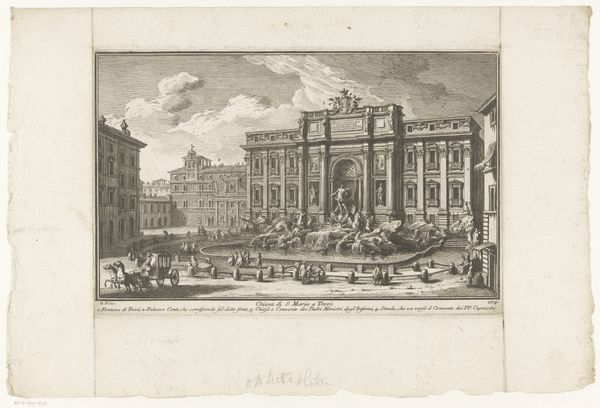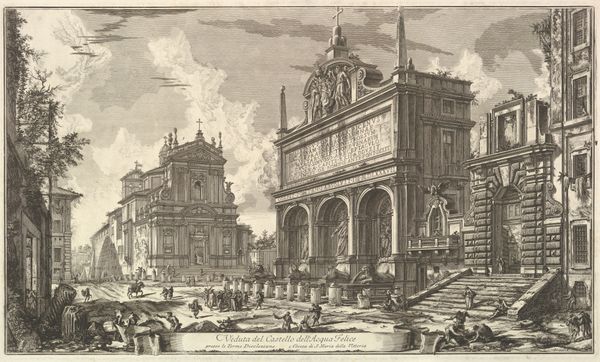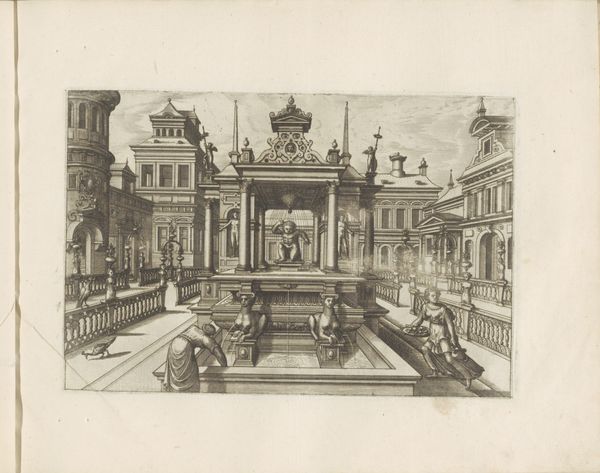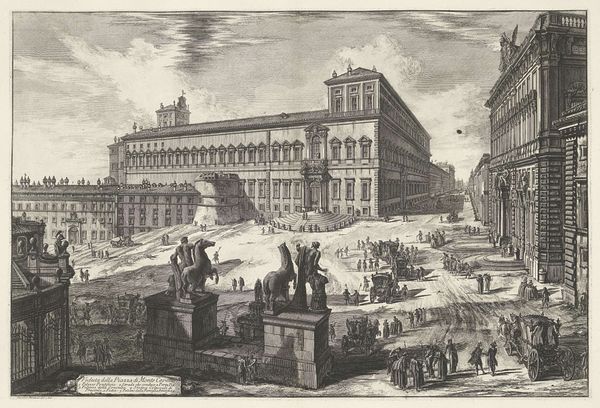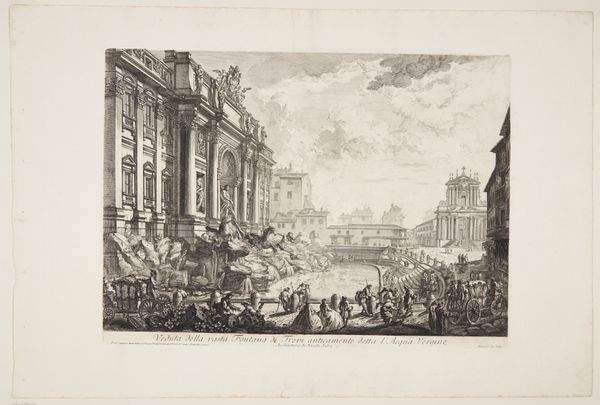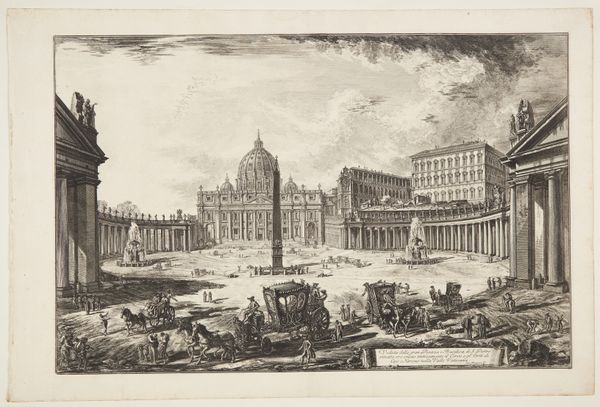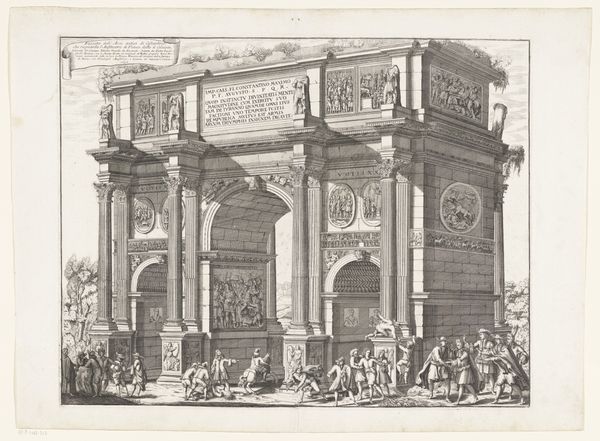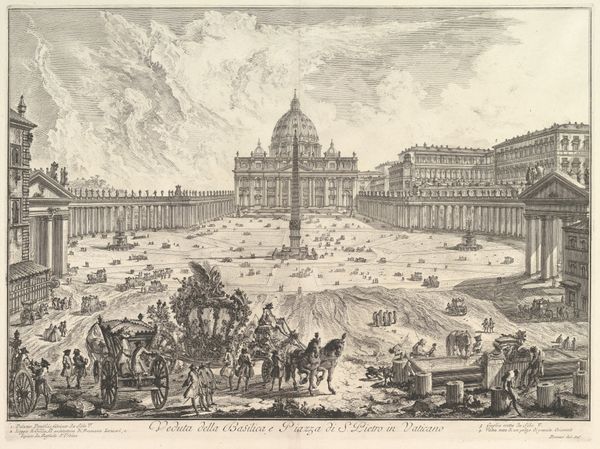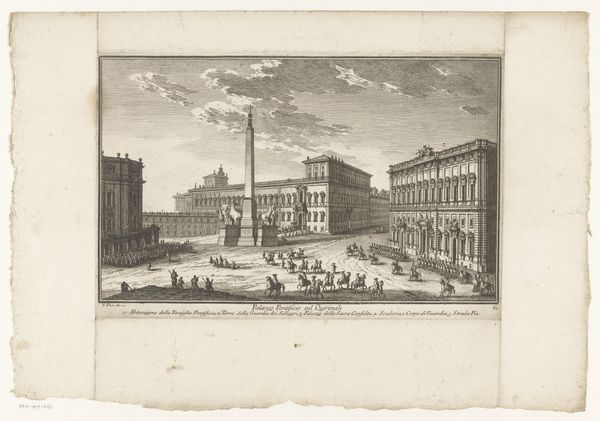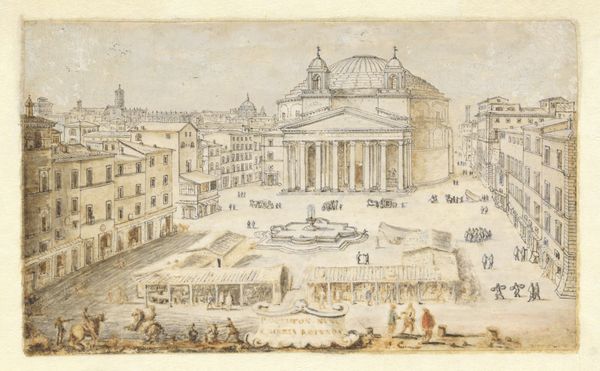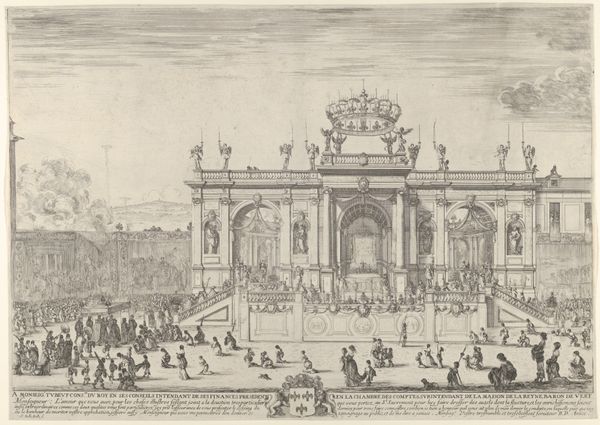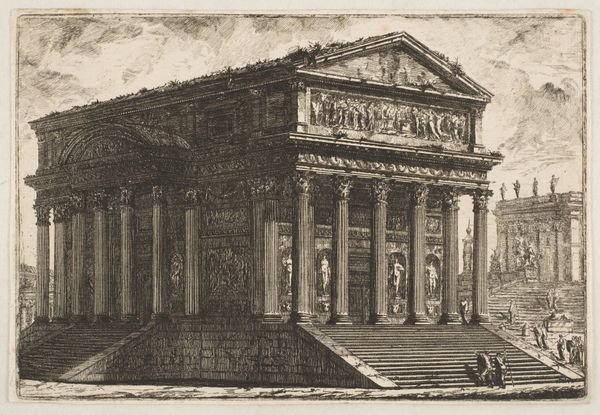
View of the Trevi Fountain from the front 1773
0:00
0:00
Dimensions: 480 mm (height) x 716 mm (width) (plademaal)
Here is Giovanni Battista Piranesi’s etching of the Trevi Fountain. Piranesi, born near Venice, Italy, dedicated his career to documenting Roman architecture. This print captures the fountain in the mid-18th century, a time when Rome was a popular destination for wealthy Europeans on their “Grand Tour”. Piranesi sold prints like this to those tourists as souvenirs, which helped solidify romanticized views of Rome as the heart of Western civilization. Note how Piranesi emphasizes the fountain's grandeur by exaggerating its size relative to the people surrounding it, and by using dramatic light and shadow. We can see in this piece a dialogue about who is remembered and how. The Trevi Fountain and Piranesi’s print celebrate Roman power and artistry, and the legacy of European colonialism. At the same time, they offer a glimpse into the lives of ordinary people who lived in and visited Rome. What does it mean to remember both the structures of power and the individuals who navigate them?
Comments
No comments
Be the first to comment and join the conversation on the ultimate creative platform.
